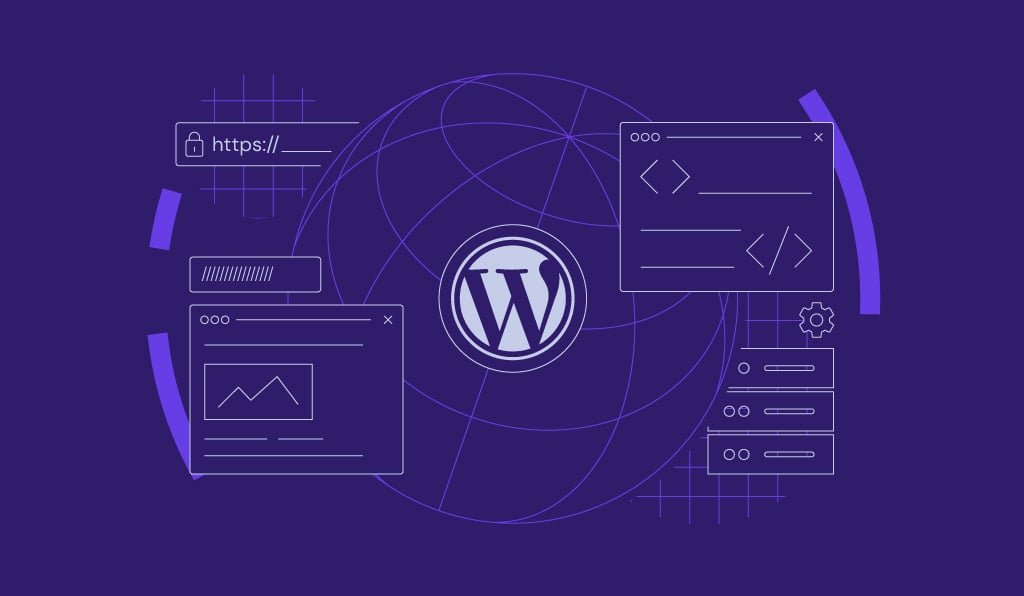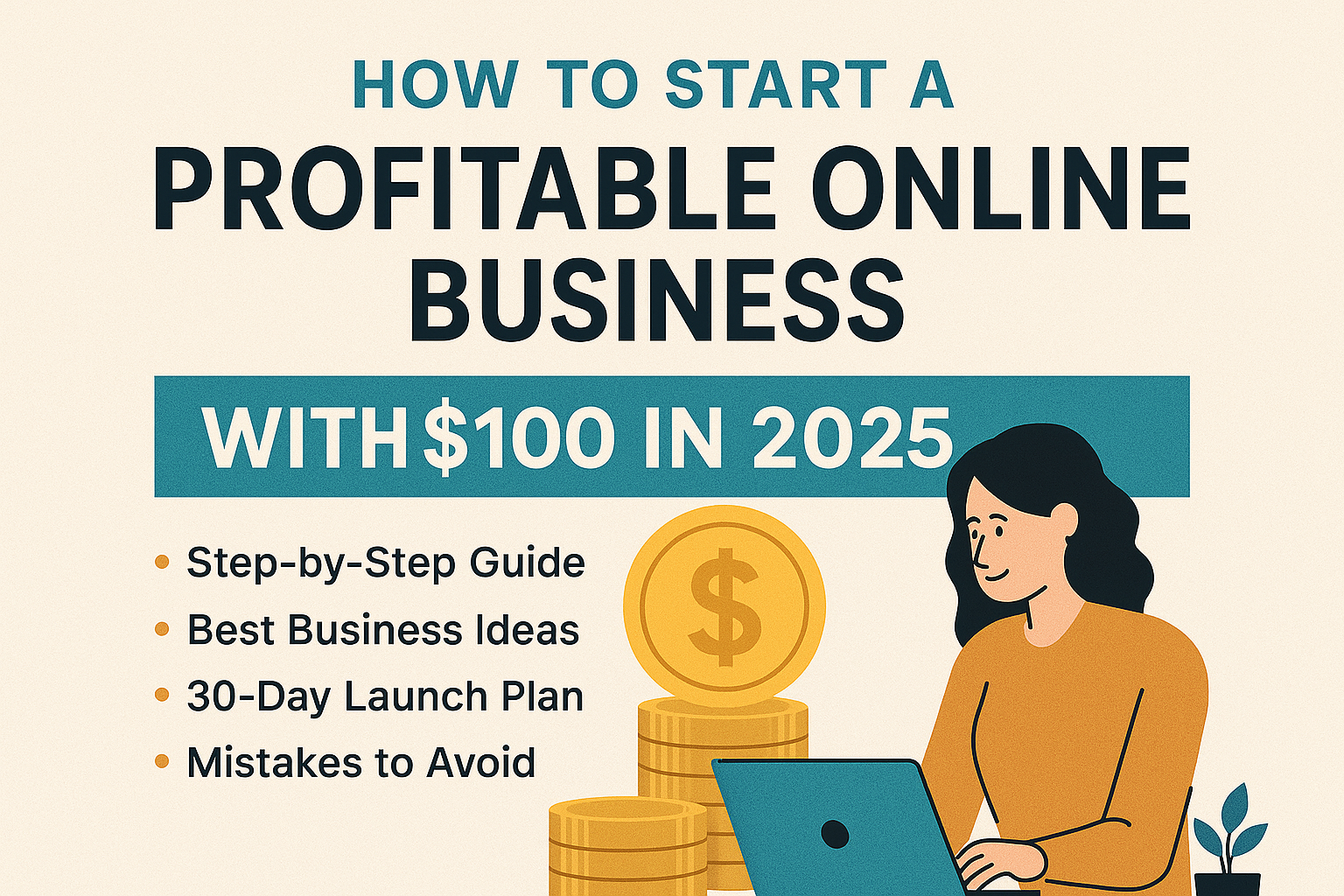Table of Contents
- Introduction
- Why Start a Profitable Online Business with $100?
- Step 1: Choosing the Right Business Model
- Dropshipping
- Print on Demand
- Freelancing
- Digital Products
- Affiliate Marketing
- Step 2: Market Research
- Step 3: Setting Up Your Online Presence
- Domain and Hosting
- Website Builders
- Social Media Profiles
- Step 4: Budget Allocation
- Step 5: Creating Your Offer
- Step 6: Marketing on a Budget
- Content Marketing
- Social Media Marketing
- Email Marketing
- Paid Advertising
- Networking
- Step 7: Scaling and Automation
- Real-Life Examples
- Common Pitfalls and How to Avoid Them
- Top Tools and Resources
- Frequently Asked Questions
- Conclusion
- External Resources
Introduction
In today’s digital era, the barrier to entrepreneurship has never been lower. Thanks to affordable tools and platforms, you can start a profitable online business with $100 or even less. This guide will walk you through the process, from ideation to execution, and show you how you can transform a modest investment into a thriving venture in 2025.
Why Start a Profitable Online Business with $100?
Starting an online business with a small budget offers several unique advantages:
- Low Risk: You’re not risking your life’s savings, making it easier to experiment and learn.
- Scalability: Online businesses can reach global markets and scale quickly.
- Flexibility: Work from anywhere, anytime.
- Diverse Opportunities: From e-commerce to consulting, digital products to freelancing, your options are vast.
With digital tools becoming more powerful and affordable, the dream to start a profitable online business with $100 is more accessible than ever.
Step 1: Choosing the Right Business Model
Your journey to start a profitable online business with $100 begins by selecting a business model that aligns with your skills, interests, and budget. Here are some business models you can consider:
1. Dropshipping
Dropshipping lets you sell products online without holding inventory. You only pay suppliers after you’ve made a sale, making it ideal for those wanting to start a profitable online business with $100. Start-up platforms such as Shopify simplify the process.
2. Print on Demand
With print-on-demand, you design graphics for items like t-shirts or mugs. When someone buys your design, the product is printed and shipped automatically. This model is easy to start with minimal upfront investment. Check out Printful or Printify.
3. Freelancing
If you have a skill (writing, design, marketing, etc.), freelancing is one of the fastest ways to start a profitable online business with $100. Platforms like Upwork and Fiverr are excellent places to begin. read more
4. Digital Products
You can create and sell e-books, courses, templates, and software online. With digital products, once you’ve made the product, delivery is automatic, and there’s no inventory cost. Explore options on Gumroad or Teachable.
5. Affiliate Marketing
Promote other companies’ products and earn commissions for each sale made through your links. It’s possible to start a profitable online business with $100 using content and social media. Learn more about affiliate marketing at Neil Patel’s guide.
Step 2: Market Research
Before you invest your $100, conduct thorough market research to maximize your chances of success:
- Identify Your Niche: What problems can you solve? What are people searching for online?
- Analyze Competitors: Examine what others are doing and look for gaps.
- Validate Your Idea: Use surveys, forums, or social media to validate the demand for your product or service.
Tools like Google Trends and Answer the Public can help you spot trends and find what people are looking for. Ensuring demand is the foundation for successfully starting a profitable online business with $100.
Step 3: Setting Up Your Online Presence
Creating an online presence is crucial. Here’s how to do it on a budget:
1. Domain and Hosting
Expect to spend around $10–$15 for a domain name (via Namecheap or GoDaddy). Hosting plans start as low as $2–$5 per month (Bluehost, Hostinger). This amount leaves you with plenty of your $100 budget.

2. Website Builders
If you want something fast and easy, website builders like Wix or WordPress.com are affordable and user-friendly.
3. Social Media Profiles
Create free business pages on platforms like Facebook, Instagram, and LinkedIn. These channels can help you reach your audience without extra cost.
Step 4: Budget Allocation
When you start a profitable online business with $100, every dollar counts. Here’s a sample allocation:
| Expense | Estimated Cost |
|---|---|
| Domain Registration | $10 |
| Website Hosting | $20 |
| Website Builder/Themes | $20 |
| Marketing/Ads | $30 |
| Tools/Software | $20 |
| Total | $100 |
Adjust based on your chosen model. For instance, if you’re freelancing, you may not need to invest in product inventory or expensive websites.
Step 5: Creating Your Offer
To start a profitable online business with $100, your offer must stand out:
- Unique Value Proposition: What makes your offer different? Why should people choose you?
- High-Quality Content or Product: Invest time in ensuring your service or product is the best it can be.
- Pricing Strategy: Research competitors and offer competitive but profitable pricing.
If you’re selling digital products, use free or affordable tools to create professional results. For example, Canva for design or Audacity for audio editing.
Step 6: Marketing on a Budget
Maximize your reach without overspending:
1. Content Marketing
Start a blog or YouTube channel around your niche. This boosts your credibility and generates organic traffic. HubSpot’s guide can assist you in beginning your journey.
2. Social Media Marketing
Leverage free social platforms to build your audience. Consistent posting and engaging content are key.
3. Email Marketing
Use free email marketing tools like Mailchimp (up to 500 contacts) to build a list and send newsletters.
4. Paid Advertising
If your budget allows, use $20–$30 for highly targeted ads on Facebook or Google Ads. Start small, test, and scale only what works.
5. Networking
Join online communities and forums related to your niche. Sites like Reddit and Quora are excellent for answering questions and subtly promoting your offer.
Step 7: Scaling and Automation
Once you begin to make sales or gain clients, reinvest profits to grow your business:
- Automate Repetitive Tasks: Use free or low-cost tools like Zapier for automation.
- Outsource: Hire freelancers for tasks outside your expertise.
- Expand Your Offerings: Introduce new products or services as your business grows.
Automation and delegation are essential to start a profitable online business with $100 and scale it effectively.
Real-Life Examples
Here are inspiring stories of entrepreneurs who managed to start a profitable online business with $100 or less:
- Sarah Titus started an Etsy shop with $50 and now earns a full-time income. Read her story here.
- Pat Flynn launched his first digital product business with under $100 and built Smart Passive Income.
- Charlie Chang grew a YouTube business from scratch, investing only in basic equipment and free tools, as seen on his YouTube channel.
Common Pitfalls and How to Avoid Them
When you start a profitable online business with $100, watch out for these mistakes:
- Chasing Too Many Ideas: Focus on a single niche and business model first.
- Overspending on Tools: Use free trials and only pay for tools when absolutely necessary.
- Ignoring Customer Feedback: Listen to your audience and adapt quickly.
- Neglecting Marketing: No matter how good your product is, you need to promote it.
For more on avoiding business mistakes, check out Entrepreneur’s guide.
Top Tools and Resources (Most Are Free or Affordable)
To start a profitable online business with $100, leverage these resources:
- Design: Canva
- Website: Wix, WordPress
- Payments: PayPal, Stripe
- Email Marketing: Mailchimp
- Stock Photos: Unsplash, Pexels
- Analytics: Google Analytics
Frequently Asked Questions
Q: Is it really possible to start a profitable online business with $100?
A: Absolutely. With careful planning, focus, and leveraging free/affordable tools, many entrepreneurs have done it. The key is to start small and scale up.
Q: What is the fastest way to start making money online with $100?
A: Freelancing and affiliate marketing are usually the quickest, as they require little to no inventory and can be started immediately.
Q: What skills do I need?
A: Basic computer skills, willingness to learn, and dedication. You can learn most other skills for free online (Coursera, YouTube).
Q: How long does it take to become profitable?
A: It varies, but with consistent effort, you could see results in a few weeks to a few months.
Conclusion
To start a profitable online business with $100 in 2025, you don’t need to be a tech genius or a marketing guru. With the right approach, dedication, and smart use of your budget, you can build a sustainable and scalable business. Focus on solving real problems, use free and affordable tools, market your business wisely, and reinvest your profits for growth.
If you’re ready to take the plunge, don’t let your limited funds hold you back. The digital world is full of opportunity—start a profitable online business with $100 today and watch it grow in 2025 and beyond.
External Resources:

